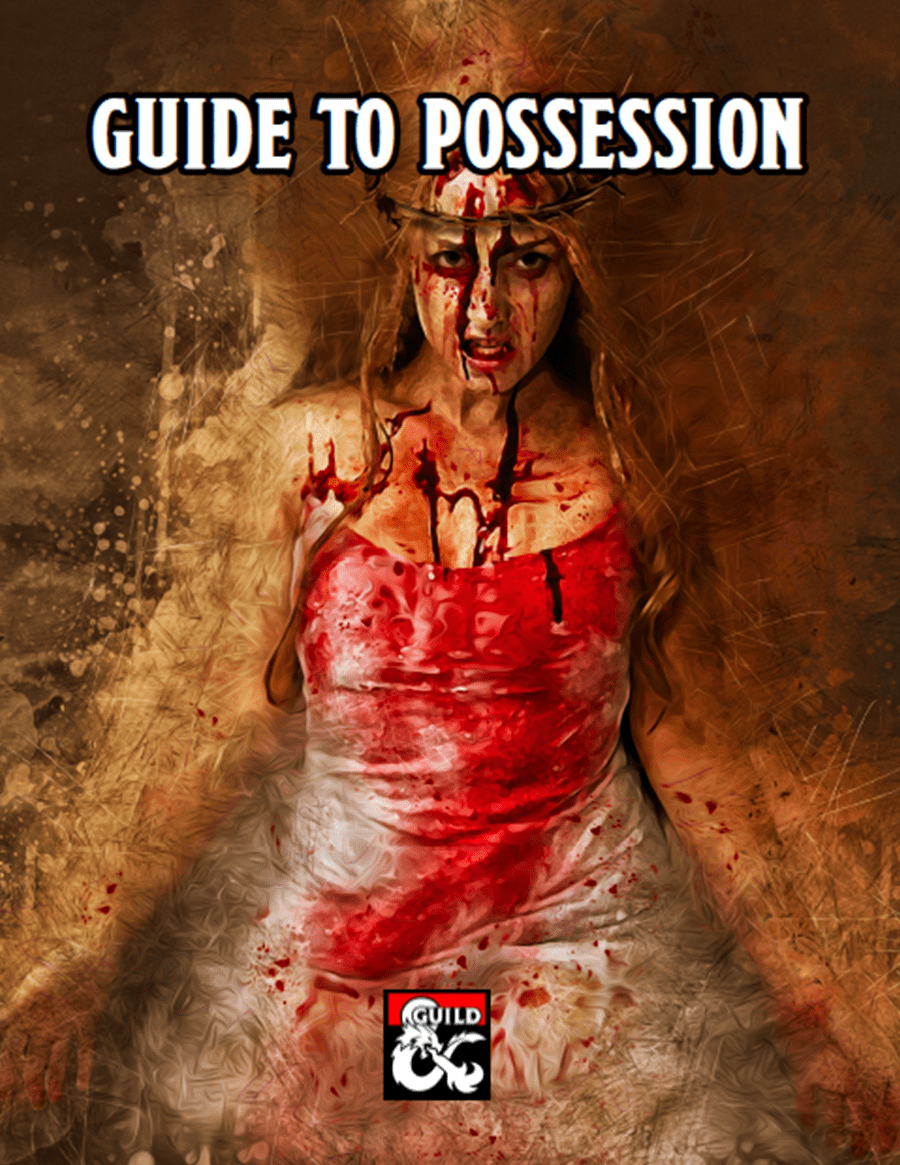Guide to Possession is a D&D 5e supplement from BenDjinn Games that costs $5.95, is 35-pages long and available for purchase at the Dungeon Masters Guild.
It’s a solid supplement and worthwhile if you’re planning to have a dramatic possession in your game, but it lacks that magic spark. There’s nothing in here that’ll cause your jaw to drop and persuade you to use possession more often or more dramatically. I’m still sure that possession in D&D is something that should only happen to NPCs and should be kept away from the PCs.
There is conversion about roleplaying possessions, but that’s the final section of the Guide, not the point of it. That discussion begins on page 26 and effectively finishes on page 27 with the rest of the article quickly moving on to prevention and removal.
Guide to Possession could trim a few pages, especially at the start where the opening paragraphs tell us again and again about the same differences when it comes to demonic and devil possession. Devils are sneaky. Demons are not.
Where the Guide to Possession does well with its page count is with the art. We’ve some full-page illustrations here, along with small and sometimes decorative pieces, and they’ve been sourced from Wizards of the Coast, Kaitlynn Peavler’s creative commons license for Bone Collector and used well. You feel you’re getting a professional and well-presented product for your money.
The bulk of the new rule suggestions deal with possessions from five sources; fiends (demons and devils), the fey, celestials, elementals and the undead.
In practical terms that means you get a table for each: mannerisms, quests or traits. In some cases, you get a quick selection of NPCs too.

A sample demonic feature of possession is a ‘worm tongue’, not in the Lord of the Rings sense, but an actual slimy tongue that makes speech difficult. In contrast, a devilish mannerism is ‘Fierna’ in which you always try and make other people do all of the work, no matter how trivial.
Celestials, I note, get the sort of trait that PCs might want. It’ll take a firm DM to stay their hand. For example, those possessed by Celestials might learn the resistance cantrip and can cast it once per day, or the light cantrip or just the ability to heal 1d6 hit points daily.
Elemental possession feels brutal and undead possession suitably scary. The latter gets some extra love, appropriately so, with a lingering look at different options — for example, area possession versus the possession of one specific person.
Overall? Guide to Possession wasn’t what I wanted when I bought it. It’s not a fresh take at this tricky subject. There are still no answers about removing player agency or avoiding tropes. However, it’s still going straight into my archive of useful PDFs to have on speed dial. It’s more like an extension of basic possession rules with a recap of careful observations.
If you need to outsource some essential thinking on Possession or if you need a little more meat for an encounter then the Guide to Possession feels like a safe pair of hands.


